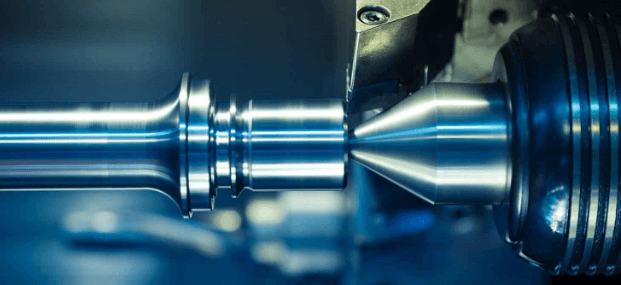What is a Vertical Machining Center?

Introduction
Vertical Machining Centers (VMCs) are pivotal in modern manufacturing, enabling precision machining of complex parts with high efficiency. This article delves into what VMCs are, their key components, functionalities, and the advantages they bring to industries such as automotive, aerospace, and more.
What is a Vertical Machining Center?
A Vertical Machining Center is a CNC (Computer Numerical Control) machining tool that primarily operates in a vertical orientation. This configuration allows the machine’s spindle to operate vertically, or perpendicular to the worktable, facilitating a variety of operations like milling, drilling, and tapping. The essence of a VMC lies in its ability to produce precise and intricate parts by automating the machining process.
Design and Features of Vertical Machining Centers
VMCs are designed with a robust structure that includes a base, column, spindle, table, and automatic tool changer. The design emphasizes stability and precision, with features tailored to enhance performance such as high-speed spindles, sophisticated software for CNC controls, and adaptive technology for real-time adjustments during machining.
How Does a Vertical Machining Center Work?
The operation of a Vertical Machining Center starts by securing the workpiece onto the machine table. The machine then uses a series of programmed instructions to control the movement of the tools across three axes (X, Y, and Z). Automation is key, with the CNC system automatically adjusting tool paths for optimal accuracy and efficiency.
Types of Vertical Machining Centers
Vertical Machining Centers come in various forms to accommodate different manufacturing needs. From simple 3-axis VMCs to more advanced 5-axis models, each type is suited for specific applications, offering versatility in machining capabilities.
Applications of Vertical Machining Centers
VMCs are versatile tools used across various industries. In aerospace, they are used to machine complex components with tight tolerances. In the automotive sector, they manufacture a range of parts from simple brackets to complex engine components. Their precision and capability make them indispensable in high-precision industries.
Advantages of Using a Vertical Machining Center
The vertical orientation of VMCs provides several advantages, including better chip evacuation and easier access to the workpiece. This orientation also allows for a more compact machine footprint, which is beneficial in shops with limited space. The precision and repeatability of VMCs make them ideal for high-volume production runs.
Challenges and Limitations
While VMCs are highly effective, they are not without their challenges. The vertical orientation can limit the size of the workpiece that can be machined, and the initial investment and maintenance costs can be high. Operators must also be skilled in CNC programming and machine operation, requiring significant training.
Maintenance and Safety Guidelines
Maintaining a VMC involves regular lubrication, cleaning, and inspection to ensure optimal performance. Safety is paramount, with operators needing to follow strict guidelines and use protective gear to prevent accidents during machine operation.
Innovations in Vertical Machining Technology
Recent advancements in VMC technology include more sophisticated CNC controls, improved tooling systems, and integration with automation solutions like robotic arms. These innovations have expanded the capabilities of VMCs, allowing for more complex and precise machining operations.
Choosing the Right Vertical Machining Center
Selecting the right VMC involves considering several factors, including the types of materials to be machined, the complexity of the parts, and the production volume. Cost-efficiency and return on investment are also critical considerations, as VMCs represent a significant capital investment.
Case Studies
Various industries have benefited from the integration of VMCs into their manufacturing processes. These case studies highlight the improvements in efficiency and product quality that can be achieved with the right machining solutions.
FAQs
- What materials can be processed by a Vertical Machining Center?
- VMCs can handle a variety of materials, including metals, alloys, plastics, and composites.
- How does a Vertical Machining Center differ from a Horizontal one?
- The primary difference is the orientation of the spindle. VMCs have a vertical spindle which allows for different types of cuts and is generally better for plate work.
- What is the typical cost of a Vertical Machining Center?
- Prices for VMCs can range from $50,000 to over $250,000 depending on the model, features, and capabilities.
- How to train operators for using a Vertical Machining Center?
- Training should include CNC programming, operation procedures, maintenance protocols, and safety measures.
- What are the signs that a Vertical Machining Center needs maintenance?
- Signs include unusual vibrations, noises, or a decrease in machine accuracy and performance.
Conclusion
Vertical Machining Centers are key assets in the manufacturing industry, offering precision, efficiency, and versatility. As technology advances, the capabilities of VMCs continue to grow, making them even more valuable in a competitive market.





